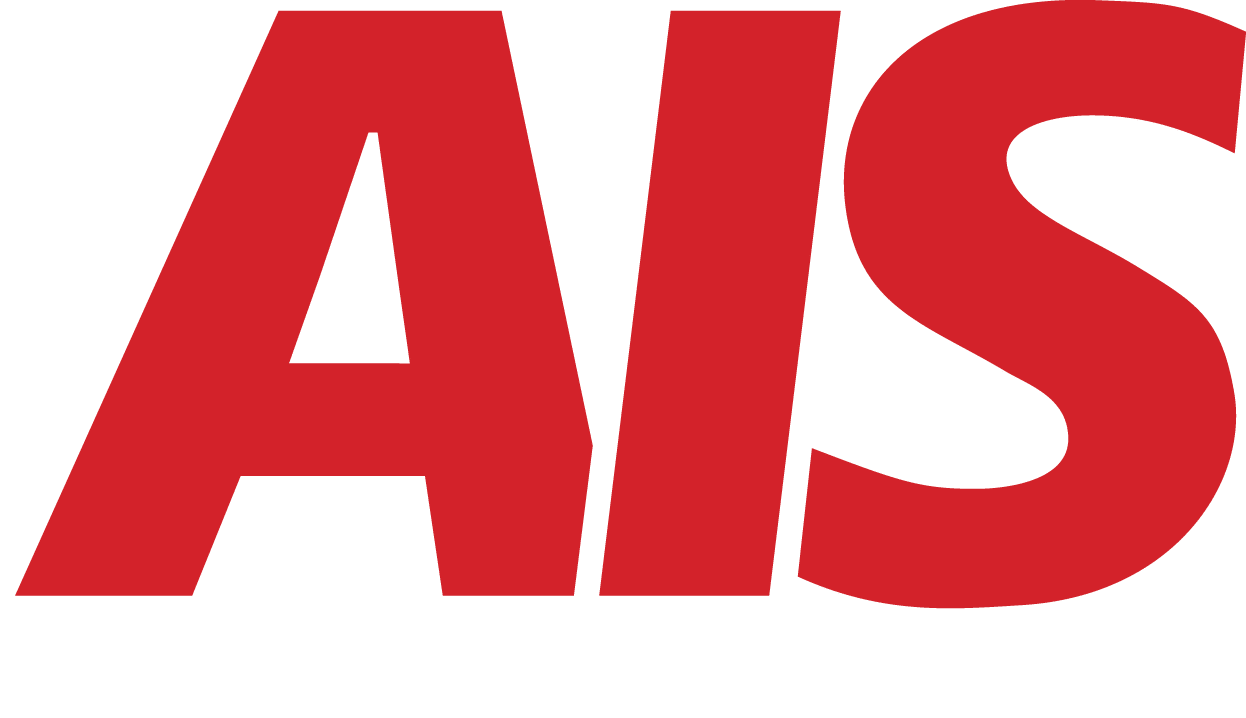Which Access Control Solutions Are Businesses Actually Using (And Why)?
July 10th, 2025 | 7 min. read

If you're shopping for an access control system and feeling overwhelmed by options, you’re not alone.
Should you use key cards or mobile phones? What about biometrics? Do you need something cloud-based? Or is a basic keypad enough?
At AIS, we’ve installed access control systems for businesses across Las Vegas and Southern California, and one thing is clear: there’s no one-size-fits-all answer.
However, there are clear patterns in what businesses choose based on their size, goals, and industry.
In this article, we’ll walk you through the access control solutions real businesses are using and explain why those systems make sense based on their needs.
Why This Question Matters More Than Ever
Access control used to be a concern only for large corporations or high-security buildings. Today, businesses of all sizes (including small offices, retail stores, healthcare clinics, and schools) are realizing the value of electronic door control.
A few significant changes drive that shift:
- Rising concerns about workplace safety and liability
- The move to hybrid work environments
- Stricter industry regulations (HIPAA, PCI, cannabis compliance)
- Desire for better control and visibility over who enters the building
However, with numerous access control options available, most business owners are unsure where to begin. And what they really want to know is: “What are other businesses like mine using?”
Let’s answer that.
The 5 Most Common Access Control Solutions in Use Today
Here’s a breakdown of the most widely adopted types of access control, and why different businesses are choosing each one.
1. Key Card and Fob Systems
This is still the most common format, and for good reason.
Employees scan a plastic card or key fob at a door reader to gain entry. It’s simple, fast, and widely supported.
Why businesses choose it:
- Easy to add or remove users
- Inexpensive hardware
- Familiar with employees
- Ideal for buildings with shared access (like offices or medical suites)
Limitations:
- Cards can be lost, shared, or stolen
- Less secure if credentials aren’t revoked promptly
- Limited individual-level tracking unless paired with software
This option works well for small to midsize teams that want reliable access control without complexity.
2. Mobile Phone-Based Access
In this setup, users open doors using a smartphone app via Bluetooth or NFC.
This is a growing trend, especially in modern offices and businesses with remote or hybrid workers.
Why businesses choose it:
- Reduces card management
- People always have their phones
- Easier to update or revoke access remotely
- Pairs well with cloud-based systems
Limitations:
- Requires tech adoption from users
- Can be less reliable in areas with poor signal
- Some employees may resist using their personal devices
Great for companies that value flexibility and want to modernize their security experience.
3. Keypad and PIN Entry
Simple and affordable, keypad systems require users to enter a code to unlock a door.
These are often used at warehouse entrances, breakroom doors, or in smaller buildings where staff turnover is low.
Why businesses choose it:
- No need for cards or devices
- Low upfront cost
- Quick install for 1–2 doors
Limitations:
- PINs are often shared
- Requires frequent code changes
- Limited user tracking
This works best for small teams or non-sensitive areas where simplicity outweighs audit needs.
4. Biometric Access (Fingerprint or Facial Recognition)
This is where security gets personal, literally.
Biometric systems use physical traits (fingerprints, facial features, iris scans) to verify a user’s identity.
Why businesses choose it:
- Impossible to share credentials
- Strongest user identity verification
- Functional in high-security areas (labs, server rooms, schools)
Limitations:
- More expensive hardware
- May raise privacy concerns
- Requires calibration and maintenance
Typically used in facilities where security is critical, or where people might try to share credentials.
5. Cloud-Based and Multi-Site Access Management
These systems enable administrators to manage access across multiple locations from a single dashboard, ideal for franchises, school districts, or businesses with regional offices.
Why businesses choose it:
- Real-time control and updates
- Easy to add or revoke users
- Scalable across multiple buildings
- Often includes audit logs, reporting, and integrations
Limitations:
- Higher upfront or subscription cost
- Requires stable internet connectivity
- May require IT involvement
For growing businesses, cloud-based platforms offer long-term flexibility and lower support overhead.
What Drives These Security and Access Control Decisions?
Most businesses don’t choose an access control system, like Verkada, just because it’s trendy. Here’s what usually drives their decision:
Size and Layout of the Building
A two-door office doesn’t need the same system as a 30,000-square-foot warehouse. Complex buildings often benefit from centralized management and zoning.
Industry or Compliance Requirements
Healthcare, finance, cannabis, and government-related industries often require more stringent access tracking, multi-factor authentication, or audit trails.
Staff Turnover and User Experience
Some businesses need the ability to onboard or offboard users quickly, without handing out keys or calling IT every time someone joins or leaves.
Budget and Plans for Growth
Some companies start with a basic card system and scale up over time. Others invest in cloud or mobile systems up front to reduce long-term management costs.
Real-World Examples: What Companies Are Using
Law Office (Client Confidentiality Focus)
- Solution: Mobile access with time-based scheduling
- Why: Allows attorneys to limit access to sensitive files and meeting rooms
- Bonus: Audit logs in case of client disputes or regulatory review
Medical Clinic (HIPAA Compliance)
- Solution: Key card readers paired with surveillance
- Why: Restricts access to patient areas and records storage
- Bonus: Compliance-friendly reports for inspections
Retail Chain (Multi-Location, Growing Fast)
- Solution: Cloud-based system with remote user provisioning
- Why: Central HR can grant/revoke access from headquarters
- Bonus: Easily adds new stores to the platform without new hardware
K-12 School (Student Safety Focus)
- Solution: Biometric access for staff-only zones
- Why: Prevents shared badges and boosts safety around sensitive areas
- Bonus: Ties into emergency lockdown protocols
Mistakes to Avoid When Choosing an Access Control System
We’ve seen businesses make some expensive or frustrating choices because they rushed the decision. Here's what to watch for:
Choosing Based Only on Price
The cheapest system might not scale, lack support, or frustrate your team, especially if you need to change something later.
Not Planning for Expansion
It’s easy to buy a system that works for five doors now… and realize you have to rip it out if you expand to 20 later.
Forgetting About the People Who Use It
A system is only helpful if people know how to use it and refrain from trying to work around it. Always consider your employees' experience, not just the IT specs.
Why AIS Helps You Choose Based on Fit—Not Just Features
AIS works with a range of access control platforms, from entry-level keypad systems to cloud-managed biometric solutions.
But we don’t start by showing you products.
We start by visiting your building, asking questions, and understanding:
- Who needs access (and when)
- What’s at risk if someone gets in who shouldn’t
- How your business might grow or change
- What kind of tech will your team use?
Then we recommend a solution that fits your needs, not just what’s new or flashy.
And yes, we handle all the installation, training, and ongoing support.
Final Thoughts on Access Control Systems: Want to Choose Smarter? Look at What Others Are Doing
When you see what other businesses like yours are using, it gets a lot easier to choose a system that will work for the long haul.
You don’t need the most expensive system. You need one that’s secure, easy to manage, and flexible enough to grow with you.
Want help picking the right access control solution? Contact AIS for a free consultation. We’ll visit your site, explain your options, and provide a clear recommendation; no pressure, no jargon, and no “one-size-fits-all” pitches.
A true southerner from Atlanta, Georgia, Marissa has always had a strong passion for writing and storytelling. She moved out west in 2018 where she became an expert on all things business technology-related as the Content Producer at AIS. Coupled with her knowledge of SEO best practices, she's been integral in catapulting AIS to the digital forefront of the industry. In her free time, she enjoys sipping wine and hanging out with her rescue-dog, WIllow. Basically, she loves wine and dogs, but not whiny dogs.



